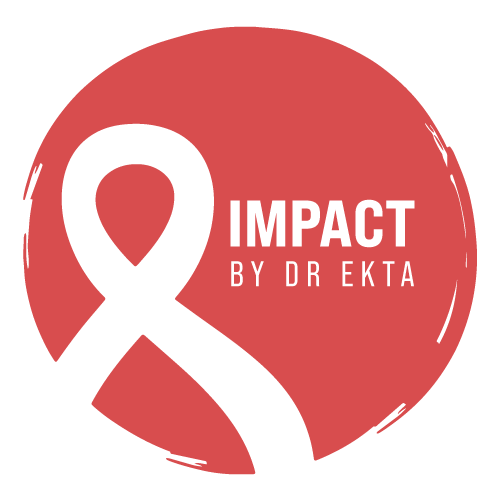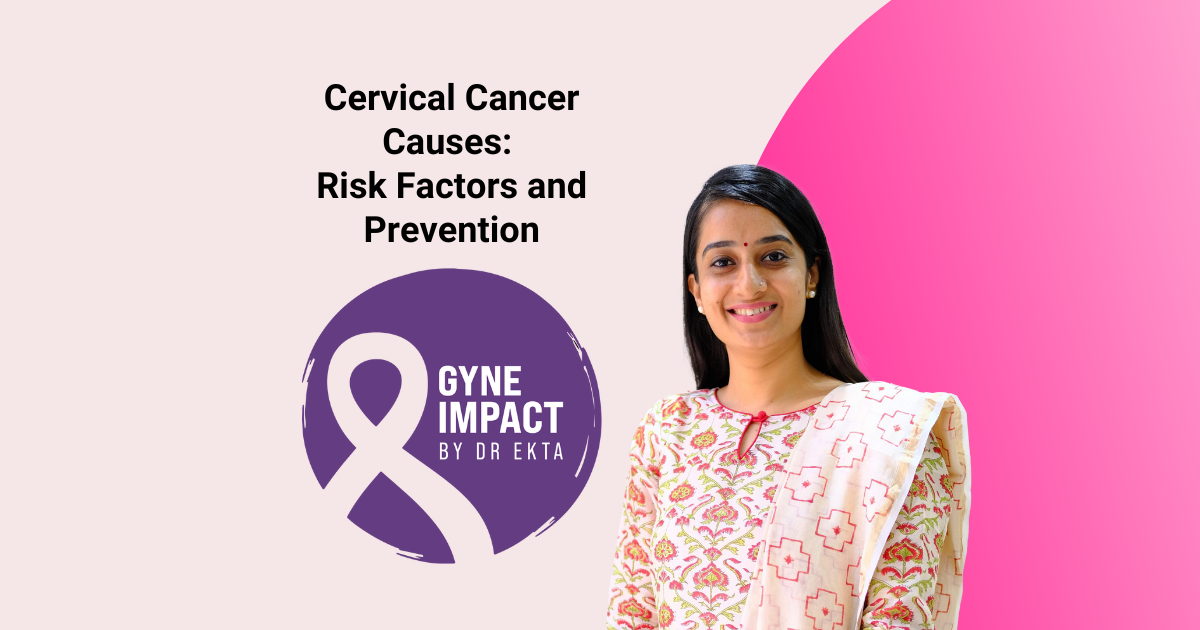Cervical cancer is one of the most common cancers affecting women worldwide. It occurs in the cells of the cervix, the lower part of the uterus that connects to the vagina. The primary cause of cervical cancer is persistent infection with high-risk types of human papillomavirus (HPV). However, several other factors can increase a woman’s risk of developing this disease.
Understanding cervical cancer causes, its risk factors, and preventive measures can help women make informed health choices and reduce their risk of developing this condition. In this blog, we will explore key causes, risk factors, and effective ways to prevent cervical cancer.
What Are the Main Causes of Cervical Cancer?
Cervical cancer develops when abnormal cells in the cervix grow uncontrollably. The primary cause is:
- Human Papillomavirus (HPV) Infection:
- HPV is a group of more than 100 related viruses.
- Certain high-risk types (HPV-16 and HPV-18) cause about 70% of cervical cancer cases.
- HPV spreads through sexual contact, making it a major risk factor.
- Many women may contract HPV, but not all develop cervical cancer. A persistent infection increases risk.
While HPV is the leading cause, other factors contribute to the development of cervical cancer.
Key Risk Factors for Cervical Cancer
Several risk factors can increase the likelihood of developing cervical cancer:
1. Early Sexual Activity and Multiple Partners
- Early sexual activity (before age 18) increases the risk of HPV exposure.
- Having multiple sexual partners increases the chance of getting HPV.
2. Weakened Immune System
- HIV/AIDS and other conditions weaken immunity, making it harder to fight HPV infections.
- Long-term use of immunosuppressive drugs can increase cancer risk.
3. Smoking
- Smoking doubles the risk of cervical cancer.
- Tobacco contains harmful chemicals that damage cervical cells and make it harder to fight HPV infections.
4. Long-term Use of Birth Control Pills
- Studies suggest using oral contraceptives for more than 5 years may slightly increase cervical cancer risk.
5. Multiple Pregnancies
- Women who have had three or more full-term pregnancies have a higher risk due to hormonal changes and weakened immunity.
6. Poor Hygiene and Unscreened STDs
- Lack of routine screening for sexually transmitted infections (STIs) increases HPV risk.
- Poor genital hygiene may contribute to chronic infections.
Prevention of Cervical Cancer
Although cervical cancer is a serious disease, it is largely preventable through vaccines, regular screenings, and lifestyle choices.
1. HPV Vaccination
- The HPV vaccine is highly effective in preventing infection from high-risk HPV types.
- Recommended for:
- Girls and boys between 9-26 years old (most effective before sexual activity begins).
- Women up to 45 years old can still benefit.
2. Regular Pap Smear and HPV Testing
- Pap smear tests detect early cervical cell changes before they become cancerous.
- HPV testing helps identify high-risk infections early.
- Women should begin screening at age 21 and continue as advised by their doctor.
3. Practice Safe Sex
- Using condoms reduces, but does not eliminate, HPV transmission risk.
- Limiting sexual partners lowers the chances of HPV exposure.
4. Quit Smoking
- Stopping smoking helps strengthen the immune system and lowers cervical cancer risk.
5. Healthy Diet and Exercise
- A diet rich in fruits, vegetables, and antioxidants supports a strong immune system.
- Maintaining a healthy weight reduces cancer risks.
Effects of Alcohol on the Body and Cervical Cancer Risk
Alcohol consumption has been linked to various cancers, including breast, liver, and gastrointestinal cancers. While research on alcohol’s direct impact on cervical cancer is still ongoing, excessive alcohol intake may contribute to a weakened immune system, making it harder for the body to clear HPV infections.
How Alcohol Affects the Body:
- Weakens the immune response: Making it harder to fight HPV and infections.
- Increases estrogen levels: Higher estrogen levels may promote cancer cell growth.
- Liver damage: The liver plays a role in hormone balance and detoxification; liver dysfunction can affect cancer risks.
Should Women Avoid Alcohol Completely?
- Occasional alcohol consumption may not significantly increase cervical cancer risk.
- However, limiting alcohol intake to moderate levels is recommended to reduce overall cancer risk.
Myths Associated with Alcohol and Cervical Cancer
There are several misconceptions about alcohol and its link to cervical cancer. Let’s clarify some of them:
Myth 1: Alcohol Has No Connection to Cervical Cancer
- While alcohol is not a direct cause, it affects the immune system and estrogen levels, which may indirectly increase cancer risk.
Myth 2: Only Heavy Drinkers Are at Risk
- Even moderate drinking can contribute to a weakened immune system over time.
Myth 3: Red Wine is Good for Preventing Cancer
- While red wine contains antioxidants, the alcohol content may still pose risks when consumed in excess.
Alcohol and Cancer Risk Factors in the Long Run
Long-term alcohol consumption increases cancer risks in multiple ways:
- Increases inflammation in the body.
- Reduces the liver’s ability to detox harmful substances.
- Weakens DNA repair mechanisms, making cells more prone to cancerous changes.
- Interferes with nutrient absorption, such as folate, which is essential for cell repair.
Limiting alcohol intake and focusing on a nutrient-rich diet can significantly lower long-term cancer risks.
Effects of Alcohol on Other Organs
Apart from its impact on cervical cancer risk, alcohol can harm several other organs:
1. Liver
- Chronic alcohol consumption leads to fatty liver, cirrhosis, and liver cancer.
2. Breast
- Alcohol increases estrogen levels, raising the risk of hormone-sensitive cancers like breast cancer.
3. Digestive System
- Alcohol damages the stomach lining and increases the risk of stomach and esophageal cancers.
4. Brain and Nervous System
- Excessive alcohol intake can lead to cognitive decline and neurological issues.
5. Heart and Blood Vessels
- Chronic alcohol use contributes to high blood pressure and heart disease.
Conclusion
Cervical cancer is largely preventable with HPV vaccination, routine screenings, and healthy lifestyle choices. Understanding cervical cancer causes, its risk factors, and making proactive decisions can significantly lower your risk.
While alcohol does not directly cause cervical cancer, excessive drinking weakens the immune system, making it harder for the body to fight HPV infections. Reducing alcohol intake, maintaining a balanced diet, and avoiding smoking are essential steps for overall cancer prevention.
By taking charge of your health today, you can protect yourself from cervical cancer and lead a healthier life. If you have concerns, speak with your doctor about the best prevention strategies for you.

